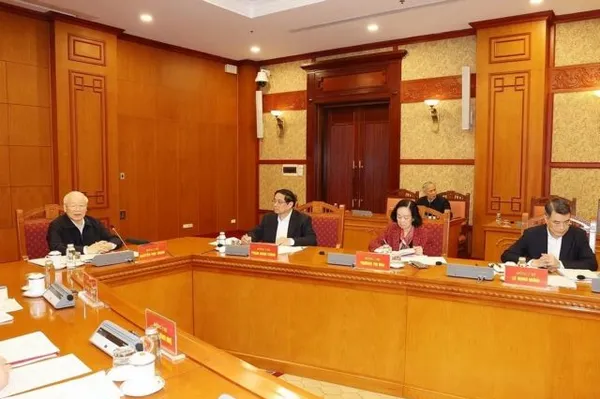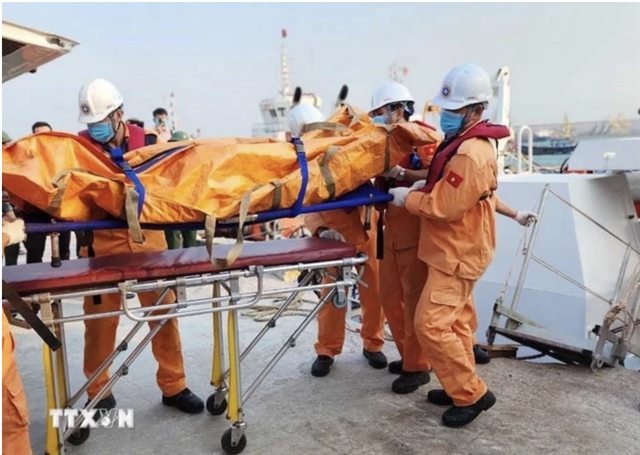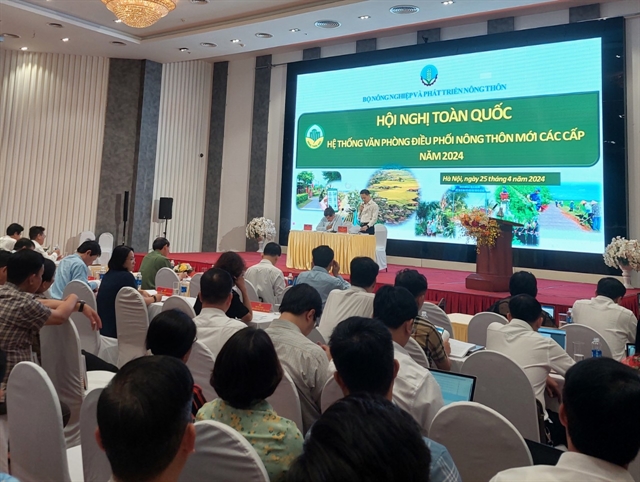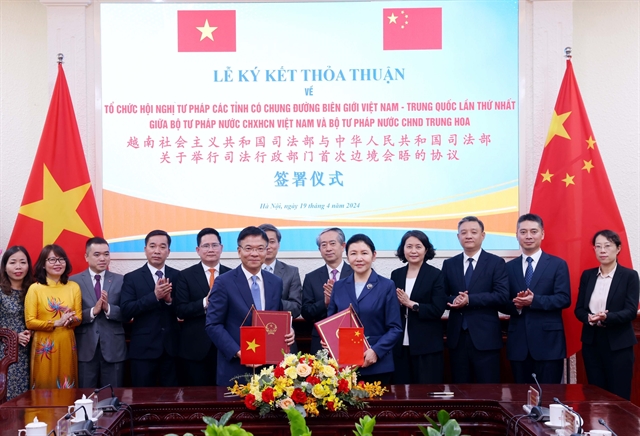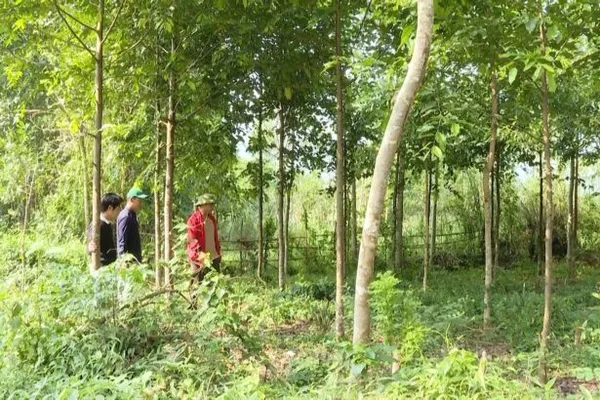 Environment
Environment

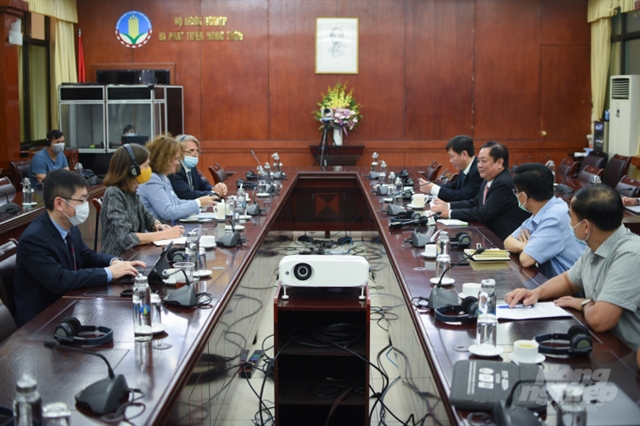
|
| Representatives from MARD and the World Bank at the high-level policy seminar. — Photo nongnghiep.vn |
HÀ NỘI — Minister of Agriculture and Rural Development Lê Minh Hoan highlighted the need for Vietnamese agriculture to aim for “green values” created from “green transformation, green consumption, green economy".
He made the statement at a high-level policy seminar on Việt Nam’s low-carbon green agricultural transformation, which was co-hosted by MARD and World Bank Vietnam on Tuesday.
According to the minister, the Vietnamese Government issued the National Green Growth Strategy for 2021-30, with a vision to 2050, on October 1, 2021. The MARD has been assigned to develop an efficient, sustainable and low-carbon commercial agriculture towards a circular and smart economy, climate resilience, and higher competitiveness for green agri-products, build new green and sustainable rural areas with models of climate resilient ecological/smart villages.
At the United Nations Summit in September 2021, President Nguyễn Xuân Phúc pledged to build the image of Vietnamese agriculture as a Transparent – Responsible – Sustainable food producer and supplier in the eyes of the international community. Prime Minister Phạm Minh Chính also pledged at the 2021 United Nations Climate Change Conference (COP26) in early November 2021 that Việt Nam would become a carbon-neutral country by 2050, he said.
MARD is drafting the Sustainable Agriculture and Rural Development Strategy to 2030 with a vision to 2050, aiming at agricultural restructuring, developing the rural economy, linking with new rural development. The strategy is structured around three pillars, which are "Ecological agriculture", "Modern countryside", and "Smart farmers", completely supporting Việt Nam’s future national strategic orientations, he said.
“It is essential to shift from agricultural production to agricultural economy; from the productivity- and output-driven approach to the value-centered approach through integrating different value systems into products; from resource leverage and extraction to enrichment in order to promote sustainable production; from self-sufficiency to integration with the flow of value chains and global development trends. In other words, it is important to shift from local to global perspectives; from extraction to enrichment; from short-term to long-term and sustainable thinking,” he said.
Former minister of agriculture and rural development Cao Đức Phát said in terms of society, agriculture development must be inclusive, actively contributing to sustainable poverty reduction by providing job opportunities and high incomes for farmers, keeping workers in agriculture and rural areas, and expanding consumer welfare to maintain social stability in difficult circumstances.
The agricultural labour force will continue to decline rapidly, but innovation-based agriculture requires more skilled workers, he said, citing the fact that by 2030 and beyond, Việt Nam's agriculture will still be dominated by smallholder farmers, who do not work for subsistence farming, but increasingly large-scale commodity production. Nonetheless, most of the farms are too small to participate in the competitive international market on their own.
“They need to work in groups, in person or virtually. More businesses are needed to lead them to join domestic and international value chains,” he said.
Kyle Kelhofer, International Finance Corporation’s Senior Country Manager of Việt Nam, Cambodia and Laos, said: “Việt Nam’s agriculture sector is at a turning point. The sector faces bright opportunities in both domestic and international markets, yet effectively competing in these will depend upon the ability of farmers and firms to deliver agricultural products with reliability, and with assurances relating to quality, safety, and sustainability.”
“Transformation to a low-carbon, green and sustainable growth path will be key to making this happen,” he said. — VNS

